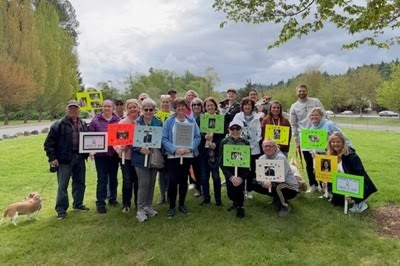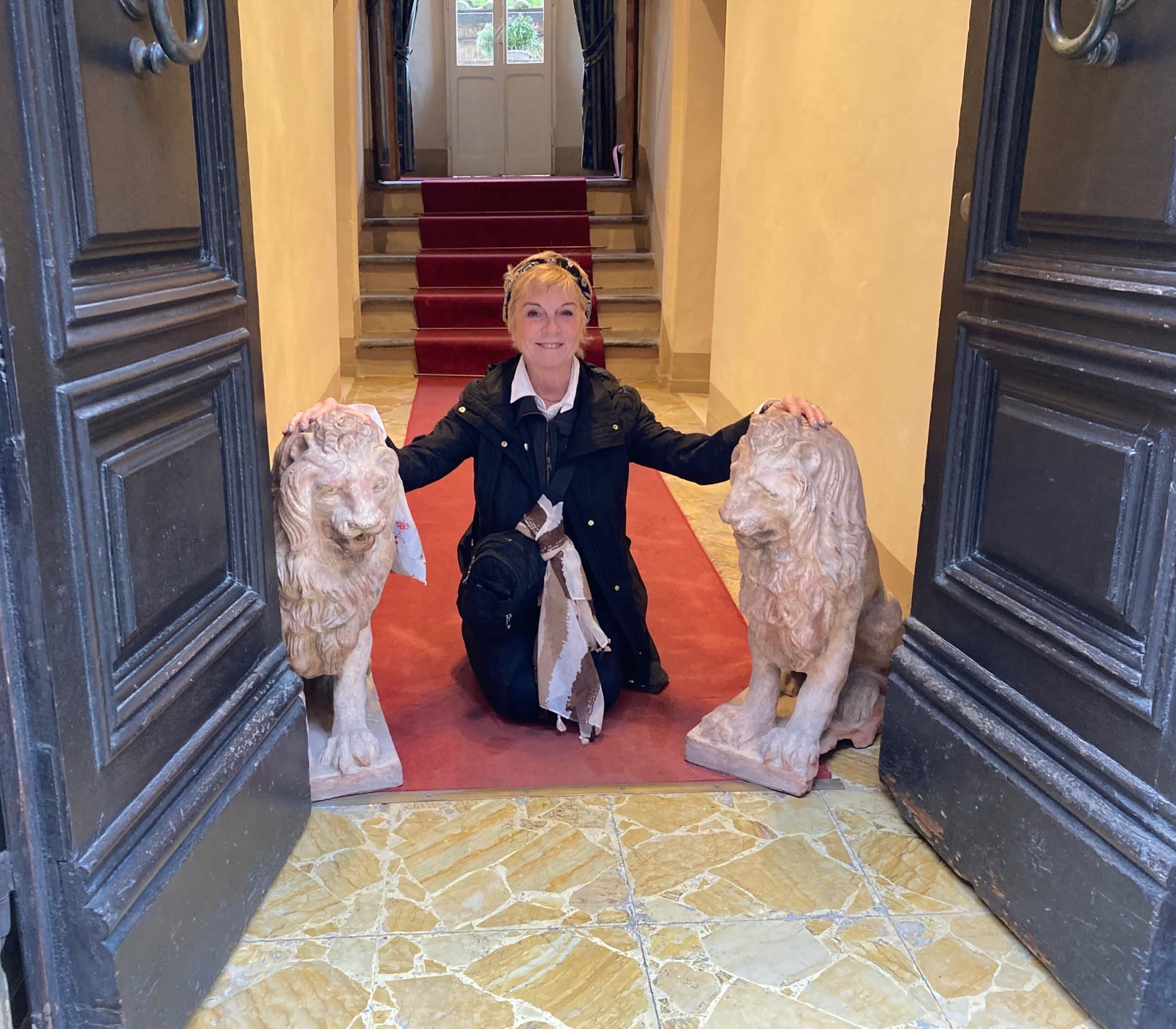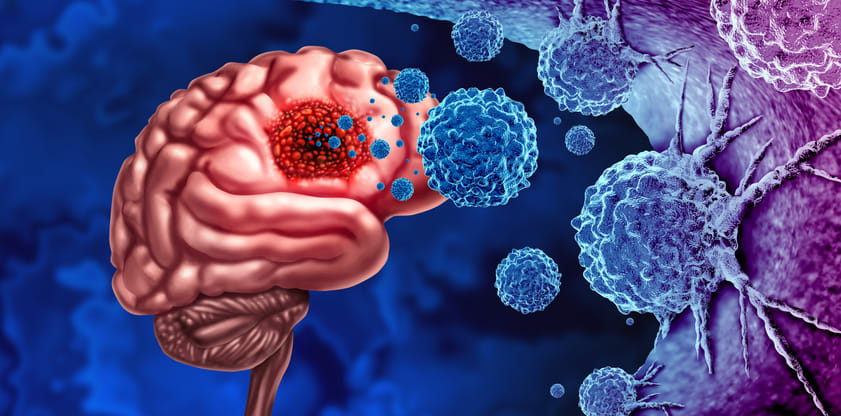Laser Interstitial Thermal Therapy (LITT)
Targeted Treatment for Hard-to-Reach Tumors
At Providence Swedish, we offer laser interstitial thermal therapy (LITT) to treat tumors in sensitive or hard-to-reach areas, like the brain. Using precise laser energy, our skilled neurosurgeons can target and destroy tumors while sparing healthy tissue — helping you heal and return more quickly to your everyday life.

Treatment Overview
LITT is an advanced, minimally invasive procedure used to treat tumors that are difficult to reach or located in sensitive areas, such as deep within the brain. Rather than removing the tumor through open surgery, LITT uses a small probe through an incision in the scalp to deliver controlled laser heat directly to the tumor, causing the abnormal tissue to break down and shrink over time.
The procedure is guided by real-time MRI imaging, allowing the care team to monitor accuracy throughout treatment. LITT may be recommended when traditional surgery isn’t possible, when tumors are small and localized, or when other treatments haven’t been effective.
Our experienced neurosurgeons work closely with oncology, radiology, and Supportive Care specialists to create a care plan tailored to your needs, with the goal of minimizing risks and easing your recovery.
What to Expect
At Providence Swedish, we’ll help you prepare for LITT with care and clarity. From pre-op planning to recovery and follow-up treatment, your team will guide you through each step — combining surgical expertise with whole-person support you can trust.
About a week before surgery, we'll schedule a pre-admission visit to:
- Assist with any remaining pre-surgical lab work or tests
- Review what will happen during your surgery
- Explain potential side effects
- Discuss medications and post-surgery care, including in-home help or equipment if needed
You'll receive information to prepare for your hospital admission. If you have any questions after your pre-admission appointment, you can reach out to your nurse or care coordinator, who will be happy to help.
Most people can go home the same day or after spending a night or two in the hospital. It’s common to feel tired or have a mild headache, swelling, or soreness where the laser was inserted. Some patients notice temporary changes in memory, balance, or speech, which usually decrease over time. Your care team will help manage any side effects and let you know when it’s safe to ease back into your normal routine. In fact, many people start feeling better within a few days.
LITT allows neurosurgeons to treat tumors in delicate or hard-to-reach areas without the need for traditional open surgery. Because the procedure uses a small incision and precisely controlled laser heat, there is often less risk to surrounding healthy tissue, fewer complications, and a shorter recovery time than traditional open surgery. For some patients, LITT can relieve symptoms caused by tumor growth or provide a treatment option when other approaches aren’t possible.
As with any surgical procedure, there are risks, including:
- Infection
- Bleeding
- Swelling in or around the brain
- Fluid buildup in the brain
- Temporary or permanent neurological changes
- Incomplete tumor treatment or recurrence
- Seizures
Your care team will talk with you about these risks, answer your questions, and help you make an informed decision that reflects your goals.
You’ll have several follow-up appointments after your procedure for the first few weeks. This helps us monitor your healing and manage any complications. As time goes on, your appointments will be less frequent, but regular checkups are required so that we can continue to manage any of your ongoing treatment needs and watch for any signs of recurrence.
Services are also available to help you through every treatment stage.
Learn more about our supportive care services.
Frequently Asked Questions
LITT may be a treatment option if you have a tumor in a delicate or hard-to-reach area, such as deep within the brain, or if traditional surgery isn’t recommended due to the tumor’s size, location, or your overall health. It can also be used when other treatments haven’t been effective. Your care team will talk with you about your diagnosis, medical history, and treatment goals to help determine if LITT is the right choice for you.
Traditional brain surgery often requires a large opening in the skull to access the tumor. Instead of a large opening, LITT uses a tiny incision and a small laser probe to precisely target and destroy the tumor. The entire procedure is guided by real-time MRI imaging, which means greater accuracy and control for your surgeon. Because it is minimally invasive, LITT usually means less pain, fewer risks, a shorter hospital stay, and a quicker recovery than traditional open surgery.
Recovery after LITT is usually quicker and easier than recovery from traditional brain surgery. Most people can return home within 24 hours. You may feel tired for a few days and could have mild headaches, swelling, or soreness where the laser was inserted. Some people notice short-term changes in memory, thinking, balance, or speech, depending on where the tumor was located. These effects are typically temporary and tend to improve over time. Your care team will talk with you about what’s normal, what to watch for, and how to manage any side effects at home.
Some people experience temporary changes in memory, thinking, speech, or balance after LITT. These effects depend on where the tumor is located in the brain and how your body responds to treatment. For most patients, these changes are mild and improve over time as the brain heals.
Your care team will check in with you regularly and watch for any changes. If you do notice issues, they’ll work with you to manage symptoms and, if needed, connect you with rehabilitation experts. Most people find that any neurological side effects gradually fade, and they can return to their usual activities.
Yes, we are one of only a handful of national programs to offer a dedicated rehabilitation program led by a fellowship-trained specialist.
The program integrates the medical management of treatment-related side effects and a variety of other physical, occupational, and behavioral therapies, which have been shown to improve overall health for people living with cancer. This may include nutritional guidance to help you eat well during and after treatment and physical or occupational therapy to help prevent lymphedema.
After your LITT procedure, your care team will schedule follow-up appointments and imaging — usually an MRI — to see how the tumor responded to treatment. The laser destroys the tumor tissue, which shrinks or is absorbed by the body over time. In some cases, additional treatments such as radiation, chemotherapy, or another LITT procedure may be recommended based on your diagnosis and how your body reacts to the procedure.
We provide a full range of supportive care services to support you during and after your cancer treatment. Some of these services include:
- Art therapists
- Cancer rehabilitation (onco-physiatry)
- Care coordinators
- Genetic counseling (cancer geneticist)
- Health educators
- Medical massage (edema, lymphedema management)
- Music therapist
- Naturopaths
- Nutritionists
- Oncology nurses
- Social workers
- Speech and language pathology
We can also help with finances, food, transportation, and other challenges for eligible patients through our patient assistance fund.
See the full list of supportive care services.
Note: Some services are provided by local partners and vary based on location. Please contact your clinic for more information.
News & Info From Our Experts



